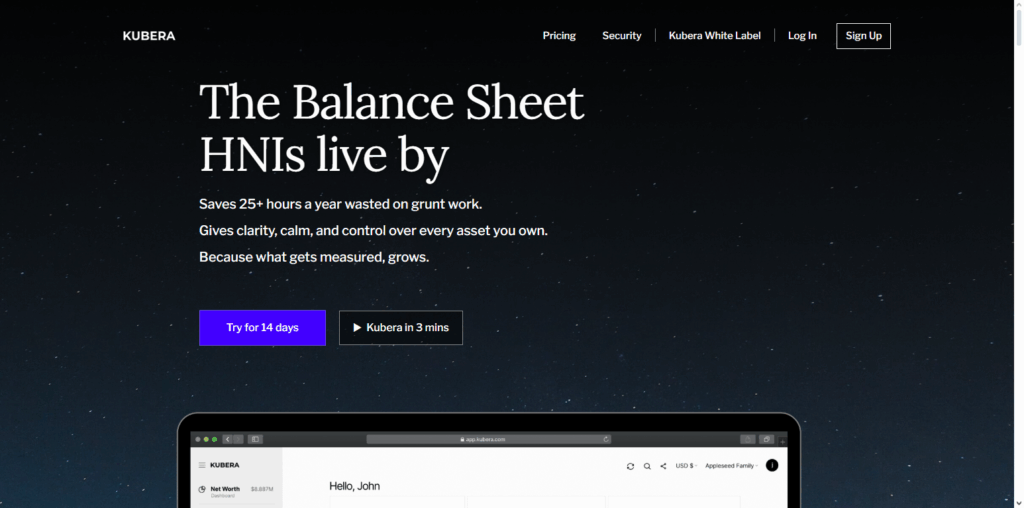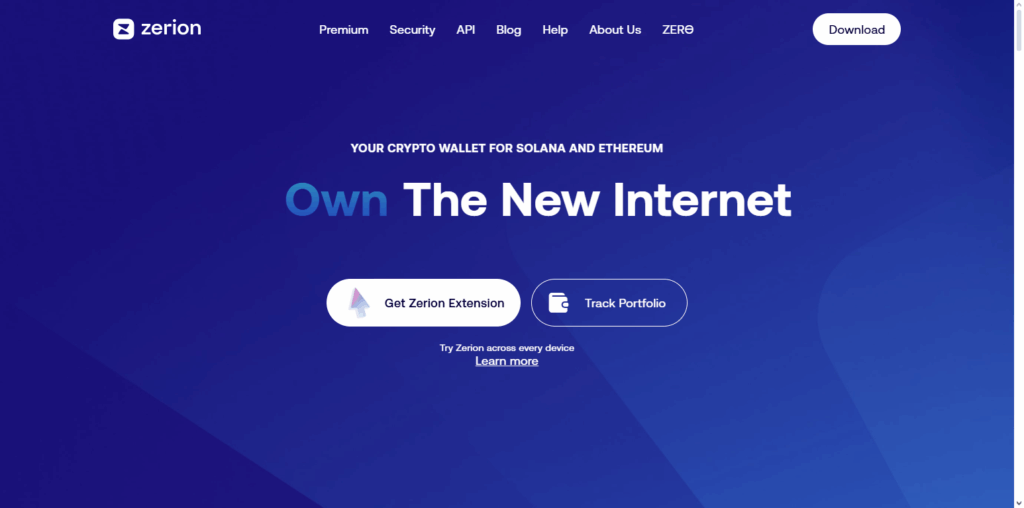This article describes the effective risk management through the top crypto portfolio tools. The volatility in the crypto market necessitates management of crypto holdings along with performance tracking and efficient risk management.
- Understanding Crypto Portfolio Tools
- How to Use Top Crypto Portfolio Tools for Effective Risk Management
- Top Crypto Portfolio Tools
- Tips for Effective Risk Management
- Key Features to Look for in Portfolio Tools
- Real-Time Tracking
- Performance Analytics
- Risk Assessment Tools
- Alerts & Notifications
- Multi-Platform Accessibility
- Security & Privacy
- DeFi & NFT Support
- Automated Portfolio Rebalancing
- Common Mistakes to Avoid
- Ignoring Security Risks
- Overcomplicating the Portfolio
- Neglecting Regular Monitoring
- Over-Reliance on Automation
- Ignoring Diversification
- Failing to Set Alerts
- Emotional Trading
- Pros & Cons
- Conclusion
- FAQ
With the use of advanced crypto portfolio tools, you can consolidate your portfolio, create alerts, evaluate your exposure, and optimize your risk management in crypto.
Understanding Crypto Portfolio Tools
A crypto portfolio tool helps cryptocurrency investors consolidate their holdings and analyze their value in a more efficient and centralized manner. This tool combines various exchanges and DeFi wallets and offers various analytics and crypto investment projections.
They analyze and calculate gains and losses in real-time. For sophisticated investors, advanced crypto portfolio tools integrate portfolio tracking with automated rebalancing to dynamically mitigate investment risks and reduce losses.

Other valuable features include ROI metrics, portfolio tax summaries, and historical performance analytics. They also integrate with external crypto exchanges to automate rebalancing. Users can customize their analytics dashboard to automate performance tracking.
This reduces emotional trading in rapidly changing markets and helps investors implement disciplined trading strategies. All of these features reduce exposure to unnecessary risks in the volatile crypto market.
Having access to sophisticated analytics tools offering insights greatly reduces emotional trading. Highly advanced tools will integrate automated rebalancing to mitigate investment risks and reduce potential losses.
How to Use Top Crypto Portfolio Tools for Effective Risk Management
Step 1: Sign Up and Connect Your Accounts
- Create an account on CoinStats.

- Link all your crypto exchange accounts and wallets using secure API keys.
- This allows the tool to consolidate all your holdings in one dashboard.
Step 2: Review Your Portfolio Overview
- Check your total portfolio value, individual coin holdings, and allocation percentages.
- Identify coins that make up a large portion of your portfolio to understand concentration risks.
Step 3: Set Risk Parameters
- Decide on your risk tolerance (e.g., max loss per coin, max exposure per sector).
- Use the tool to mark coins or tokens that exceed these thresholds.
Step 4: Enable Alerts and Notifications
- Set up price alerts for each coin to act quickly if the market moves drastically.
- Enable notifications for portfolio value changes or significant market trends.
Step 5: Analyze Performance and Volatility
- Use the analytics dashboard to track ROI, daily/monthly gains, and historical performance.
- Use volatility charts to determine which coins are high-risk, and if any adjustments are necessary.
Step 6: Rebalance Your Portfolio
- For the purpose of maintaining the desired portfolio levels of risk and return, your assets will need to be reassigned and rationalized to better achieve diversification and risk mitigation objectives.
- To achieve this, you will need to sell and/or reduce the quantity you hold of high-risk coins, and overrepresented risky assets, and then shift the proceeds into lower risk assets.
Step 7: Monitor Regularly
- Rebalance the portfolio and set risk and return objectives so that you will be able to monitor progress to targets daily, and if need be, weekly.
- Change your alerts, and risk parameters within the portfolio to better reflect market changes.
Top Crypto Portfolio Tools
Delta
Delta is currently one of the top crypto portfolio tools out there for its unique blend of beginner and advanced analytics. The real-time tracking across different exchanges and wallets is what really distinguishes it.

The entire crypto portfolio is monitorable through one dashboard. Users receive performance analytics that depict ROI and profit/loss, historical performance, and customizable price and portfolio change alerts. Cross-platform shipping means Delta is always available, and users can always receive alerts, even on the move.
The tracking and analytics in Delta are designed to guide users in the crypto investing space, identifying and managing their risks. This is what Delta really excels at.
Kubera
Kubera has emerged as one of the best tools for crypto portfolios and for a good reason. With the ability to track multiple aspects of a user’s crypto portfolio in one place, Kubera can help users seamlessly track their entire portfolio and net worth.

Specially designed to help users get as complete a view of their portfolio as possible, Kubera goes a step further than the usual crypto trackers, seamlessly integrating cryptocurrencies, bank accounts, stocks, and other assets.
Portfolios can be tracked in real time, and the software’s highly intuitive and minimal interface alleviates the cognitive load that comes with tracking and analyzing complex financial data. Designed with a complete asset tracking and management focus, Kubera ranks highly among customers who prioritize both crypto tracking and financial portfolio tracking.
Zerion
Zerion is a premier crypto portfolio tool meant for DeFi investors to easily track, control, & engage with DeFi assets. What makes Zerion unique is its ability to combine all DeFi assets—from Ethereum tokens to liquidity pools and staking positions—into one simple dashboard.

Users are able to monitor their portfolio health, exposure, and risk across multiple protocols and assess real-time analytics, performance, and risk levels. Users can also make direct DeFi transactions, like token swaps and liquidity provisioning, on the same platform.
The powerful DeFi integrations, extensive tool set, and intuitive design all in one platform makes Zerion exceptional among the tools available for crypto risk management.
Tips for Effective Risk Management
Diversify Your Portfolio: Avoid concentrating your risk by investing in different crypto assets and in different sectors.
Set Risk Tolerance Levels: Determine how much you are willing to lose for each coin and for your portfolio as a whole.
Use Stop-Loss Orders: Limit losses by setting your crypto assets to be sold automatically if they drop to a certain price.
Regular Portfolio Review: Review holdings and strategies frequently and in relation to prevailing market conditions.
Stay Informed: Follow developments in the crypto industry, market trends, and regulations affecting your holdings.
Leverage Alerts & Notifications: Use crypto portfolio management tools to receive alerts and notifications to track your portfolio.
Avoid Emotional Trading: Use logic, critical thinking, and analysis instead of FOMO, panic, and greed.
Rebalance Periodically: Alter the distribution of your portfolio to adjust to the risk and strategy you have set.
Key Features to Look for in Portfolio Tools
Real-Time Tracking
See your crypto holdings over different exchanges and wallets from one interface.
Performance Analytics
Monitor and assess your return on investment from your crypto holdings, their profits and losses, their historical trends, and portfolio value over time.
Risk Assessment Tools
Analyze the level of your portfolio diversification and the volatility and risk of your cryptocurrency holdings.
Alerts & Notifications
React accordingly to significant changes with price alerts, portfolio value, and margin calls.
Multi-Platform Accessibility
Effortlessly access your portfolio via mobile, desktop, and web.
Security & Privacy
Look out for secure API integrations, data encryption, and protective measures on data.
DeFi & NFT Support
If applicable, also monitor and manage investments in DeFi, staked crypto, liquidity pools, and crypto NFTs.
Automated Portfolio Rebalancing
Works to shift your investments toward the risk levels that you have set.
Common Mistakes to Avoid
Ignoring Security Risks
Not using secure API connections or two-step verification opens up accounts to hacks.
Overcomplicating the Portfolio
Without a set strategy, tracking and making decisions can become difficult when too many assets are held.
Neglecting Regular Monitoring
Not routinely checking the portfolio can result in missed opportunities or unnoticed losses.
Over-Reliance on Automation
Following automated suggestions without research increases risk.
Ignoring Diversification
Over-investing in one coin or sector increases exposure to market volatility.
Failing to Set Alerts
In a fast-moving market, missed price or portfolio alerts result in delayed reactions.
Emotional Trading
Trading decisions based on fear or FOMO rather than analysis can result in losses.
Pros & Cons
| Pros | Cons |
|---|---|
| Consolidates all crypto holdings across exchanges and wallets in one place. | Some tools may require paid subscriptions for advanced features. |
| Provides real-time performance tracking and analytics. | Reliance on APIs can pose minor security risks if not set up correctly. |
| Helps monitor and manage risk through alerts and notifications. | Can be overwhelming for beginners due to many features and metrics. |
| Enables portfolio diversification and rebalancing strategies. | Tools cannot prevent losses caused by extreme market volatility. |
| Supports DeFi, staking, and NFT tracking in certain platforms. | Limited integration with smaller or newer exchanges in some tools. |
| Simplifies decision-making with historical performance and ROI data. | Over-reliance on automation may reduce personal market research. |
Conclusion
To sum up, effective risk management in cryptocurrency requires the use of top crypto portfolio tools. Such tools provide users with the ability to aggregate all holdings, monitor real-time performances, and assess risk exposure across various assets and platforms.
By maintaining a risk exposure and health monitoring system, alert systems, and strategic rebalancing, informed, loss-minimizing decisions can be made.
By selecting the appropriate tool, be it Delta, Kubera, or Zerion, and compliance with steadfast investing, all crypto investments can be structured, safe, and data-driven, thus achieving a better long-term portfolio growth.
FAQ
How do I connect my wallets and exchanges safely?
Most tools use read-only API keys, which allow the platform to access your portfolio data without risking your funds. Always enable two-factor authentication and avoid sharing private keys.
Which are the top crypto portfolio tools?
Some of the most popular and reliable tools include Delta, Kubera, CoinStats, Zerion, and Shrimpy, each offering unique features like DeFi tracking, portfolio aggregation, and automated rebalancing.
Why should I use crypto portfolio tools for risk management?
These tools help monitor portfolio exposure, identify high-risk assets, and track market movements. By using them, investors can diversify effectively, set alerts for price changes, and make data-driven decisions to minimize losses.
What are crypto portfolio tools?
Crypto portfolio tools are software platforms that help investors track, manage, and analyze their cryptocurrency holdings across multiple exchanges and wallets in one place. They provide real-time performance data, risk analysis, and alerts to make informed investment decisions.
Can I use one tool for all types of assets?
Some tools like Kubera allow tracking of crypto, stocks, and other assets in one place, while others specialize in crypto or DeFi only. Choose a tool based on your investment scope and needs.








